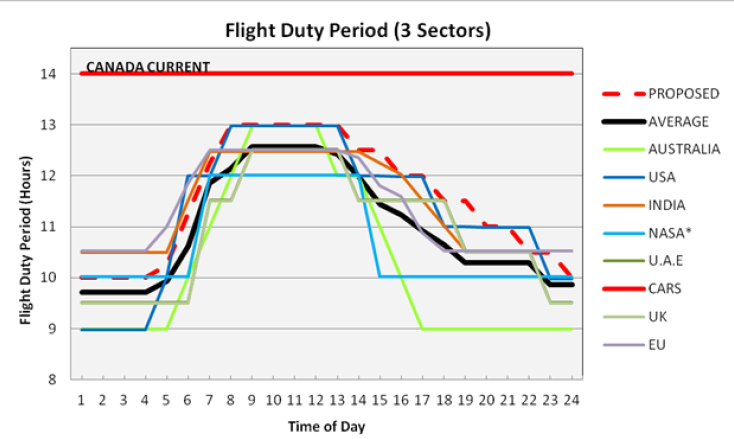Canada’s pilot fatigue rules are changing… maybe
The following is my own opinion and may not represent the opinion of my employer.
On February 12, 2009, at around 10:20 PM a Dash 8 Q400 operated by the regional airline Colgan Air for Continental Airlines crashed near Clarance Center, New York killing all 49 passengers and crew, plus one person on the ground. The investigation that followed identified many causes, but there was one area that made a big impact on US aviation laws – fatigue.
There are many factors that can lead a pilot to become fatigue. In the case of the two pilots of Colgan Air 3407 both lived out of state. The captain lived Florida, the first officer lived in Washington. In the case of the first officer, she traveled through the night on two cargo flights to Newark where she was based, arriving around 06:20 AM. When asked by another pilot if she had a crash pad (a shared apartment to sleep in) the first officer said no and said she had a couch with her name on it. During the day other staff saw the first officer in the crew room talking to pilots, watching TV and sleeping. The National Transportation Safety Board investigation stated:
“At the time of the accident, the captain would have been awake for at least 15 hours if he had awakened about 0700 and for a longer period if he had awakened earlier. The accident occurred about the same time that the captain’s sleep opportunities during the previous days had begun and the time at which he normally went to sleep. The first officer had been awake for about 9 hours at the time of the accident, which was about 3 hours before her normal bedtime. The captain had experienced chronic sleep loss, and both he and the first officer had experienced interrupted and poor-quality sleep during the 24 hours before the accident.”
Some may argue that it is solely the responsibility of the pilots to come to work rested, and I partially agree. I would also argue that a contributing factor was that at the time the average salary for a first officer on the Q400 at Colgan Air was $24,000. Think of it this way, if you live on the west coast and the only job you can get with the experience you have is on the east coast, how money do you need to get paid to make it worth it? Another point to make is that even today when you book a ticket on a major US or Canadian airline, portions of your travel may be on board a regional carrier where the pilots are not paid anywhere near what you think. The accident was featured on the popular show “Mayday” in an episode called “Dead Tired”.
In the years following the crash of Colgan Air 3407 there were some major changes to US aviation law, including new fatigue laws, changes to minimum hour requirements for Airline Transport Licenses, and changes to how stalls are trained and evaluated.
As I have blogged about a couple times now, Canada has fallen far behind in updating its fatigue rules. We have fallen behind the United States, Europe, India and the UAE to name a few. The issue has been on the radar of Canada’s Transportation Safety Board and Transport Canada for some years now. A working group made up of industry stakeholders formed in 2011 released a report in 2012 saying “that many of the elements of the current [flight duty time] requirements do not reflect today’s fatigue science and included recommendations to correct these deficiencies.” In 2014 the Canadian Aviation Regulation Advisory Council put out a Notice of Preposed Amendment in regards to flight crew fatigue management. Between then and now the proposed changes got chewed up and watered down by industry and when it finally got tabled for legislation there was a change in government.
I am hoping that this is the last time I write about a prosal to modernize Canada outdated pilot fatigue rules. I was hopeful in 2014 and I am hopeful now. According to a recent CBC article the Minister of Transportation, Marc Garneau, new rules will be pushed through soon. Airlines will have one year to comply and smaller companies four years.
Canada has some of the most outdated pilot fatigue rules in the western world, period. Changes that are backed by science, research, and the success of other countries will make Canadian aviation safer.
It is absolutely insane and outright ridiculous to hear organizations like the Air Transport Association of Canada (ATAC) say the changes are actually a safety concern! The president of ATAC, John McKenna, told CBC, “There already aren’t enough pilots around as it is. So it’s a concern for us … that it is putting a lot of pressure on training pilots quicker and getting them in the pilot seats maybe with less hours on their books than they would have had five, six years ago.” He also says, “what’s the rush?”
Let me point out that ATAC does not typically represent major airlines in Canada, with a few exceptions. ATAC represents small operators and training organizations. See the list here. ATAC and industry have been resisting changes to these laws for years. As I have pointed out in the timeline above, this is not a new issue. When Mr. McKenna wonders why we should rush I have to ask myself, what does he mean by rush? ATAC and all aviation operators in Canada have had a chance to be a part of the process and there is no excuse to say the industry is being caught off guard. I have been to an ATAC convention before and I have seen first hand the resistance to new safety regulations that may add any level of expense or complexity to an operation. ATAC should be upfront and admit this and not suggest safety is at risk. I agree there is a pilot shortage and as ATAC happens to represent a lot of training schools they should lobby the government to make aviation training affordable and not fight rules that make us all safer.


